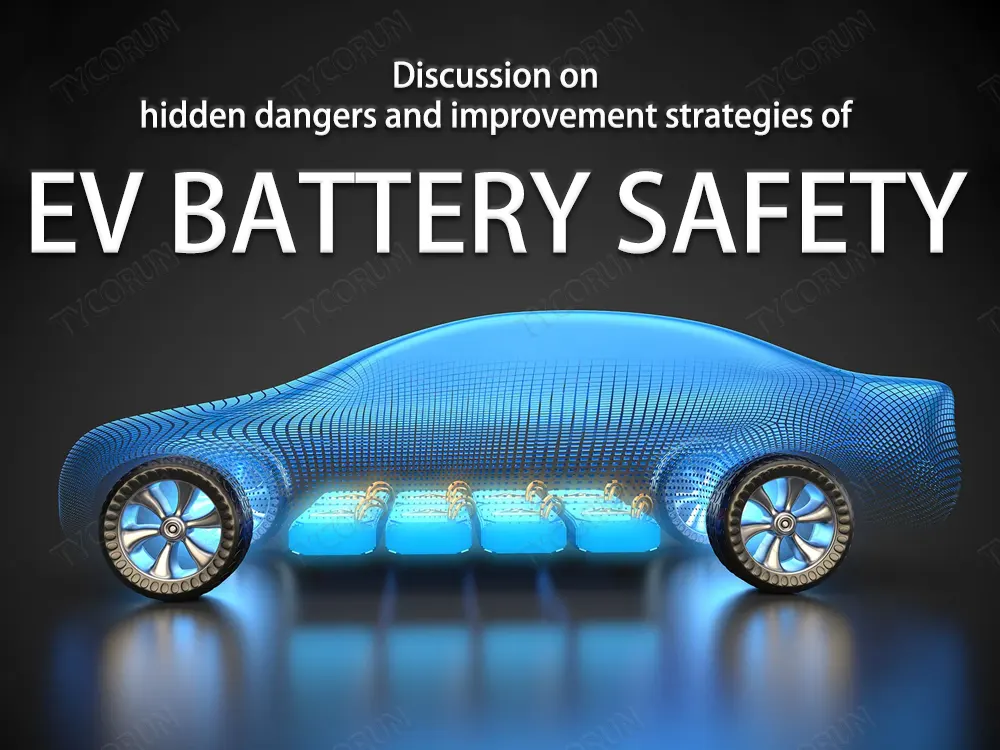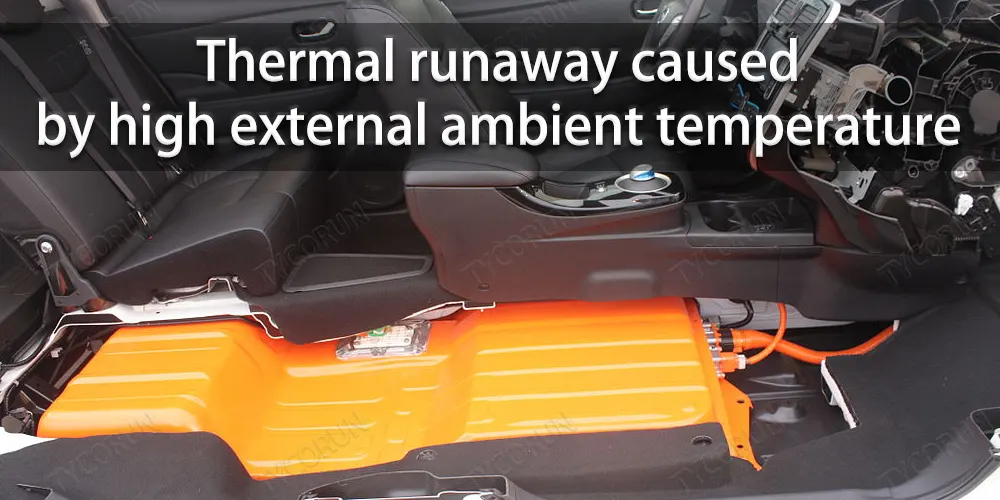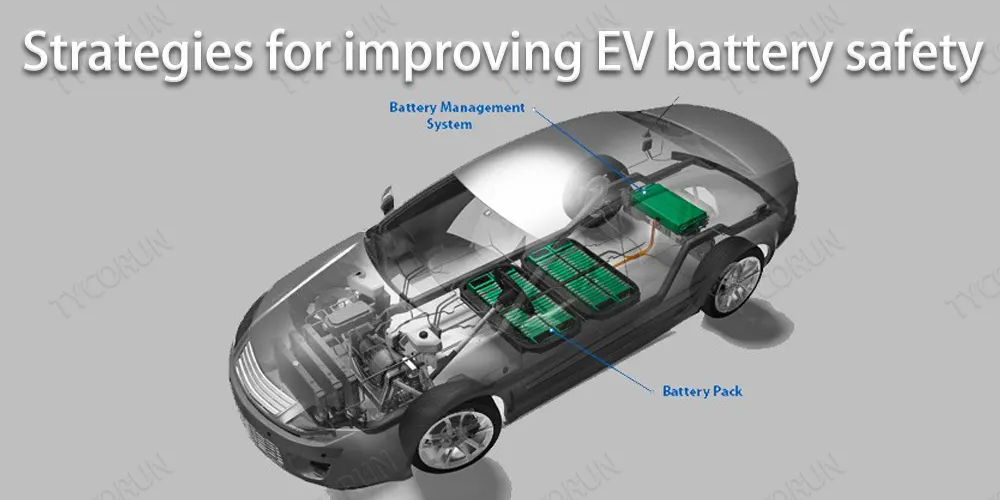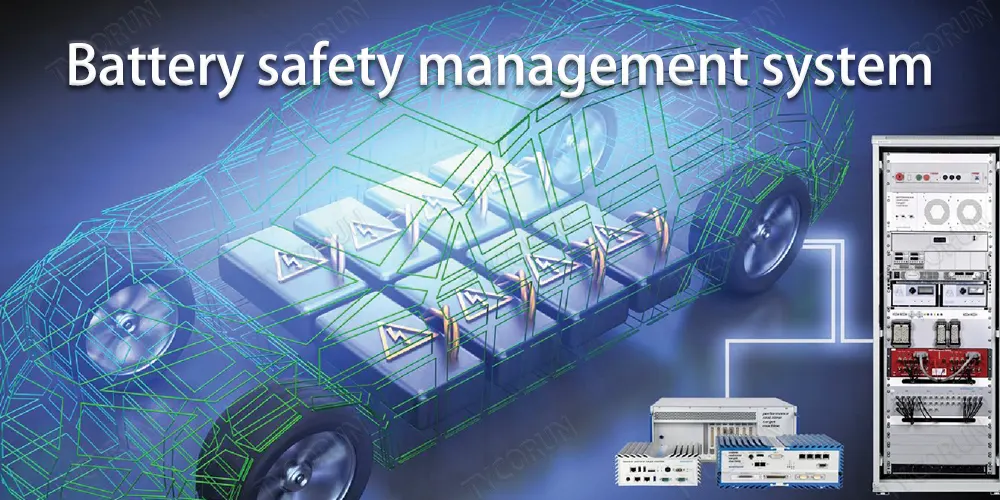Discussion on hidden dangers and improvement strategies of EV battery safety
Among the three core technology centers involved in electric vehicles, battery, motor and electronic control, it can be said that battery technology and related facilities are the issues that people generally care about.
Whether it is the lead-acid battery that has been used for nearly a century or the lithium-ion battery that people are generally concerned about, relevant practitioners have been exploring the best application solution between EV battery safety, performance and cost.

Analysis of hidden dangers of ev battery safety
Thermal runaway caused by battery overheating is the main cause of lithium-ion battery fire, which often occurs during battery charging and discharging. Since the lithium-ion itself has a certain internal resistance, it will also generate a certain amount of heat when the electric energy output ensures the energy supply of the electric vehicle. This continuous heat will make the temperature of the lithium-ion battery itself rise, causing EV battery safety problems.
A lithium-ion battery is a whole composed of multiple single cells. The common lithium-ion batteries include ternary lithium battery and lithium iron phosphate battery. When the battery temperature is in a state of continuous heating, a large amount of heat energy generated during the energy supply process gathers in the narrow battery box.
When the normal operating temperature and tolerance limit are exceeded, the service life of the lithium-ion battery will be seriously damaged, causing EV battery safety problems and even causing the thermal runaway of the lithium-ion battery to cause fire or explosion.
Causes of thermal runaway of EV batteries
The causes of thermal runaway of EV batteries include collision, improper use and high external ambient temperature.
Thermal runaway caused by crash
When an electric vehicle has a traffic accident, there will be different degrees of collisions, and strong external factors will also act on the lithium-ion battery at the same time, causing the lithium-ion battery box to be deformed and damaged, and the accessories of the battery itself to be displaced or damaged. The battery’s separator was torn, causing an internal short circuit and flammable electrolyte to leak out.
Of all the impact damage to battery performance, the most serious is puncture damage. Severe puncture injuries will be directly inserted into the battery body, causing the cathode and anode of the battery to be short-circuited directly and aggravating the heat concentration to generate an explosion, causing heat out of control and seriously damaging EV battery safety.
Thermal runaway caused by improper use
Improper use is also the main cause of thermal runaway of lithium-ion batteries, which is specifically reflected in several major reasons such as overcharging, overdischarging, and external short circuit.
Compared with external short circuit and overcharging, overdischarging is relatively less harmful to EV battery safety. The growth of copper dendrites during discharging will reduce the EV battery safety and indirectly increase the probability of thermal runaway.
When the external short circuit occurs, the heat of the battery cannot be effectively dissipated, and the temperature of the battery will rise and cause thermal runaway.
Overcharging is the most harmful to lithium-ion batteries, and it is also the main cause of battery thermal runaway. At this time, the active material in the battery cell comes into contact with the air and reacts violently, releasing a large amount of heat, which causes the battery to burn and catch fire.
Thermal runaway caused by high external ambient temperature
Excessive external ambient temperature is also one of the causes of thermal runaway accidents in lithium-ion batteries.
When the external environment is too high, the heat dissipation of lithium ions themselves is intensified and cannot be effectively dispersed, and the accumulation of internal and external thermal pressure leads to damage to the temperature control system of lithium ions, which cannot achieve the proper protection effect. As a result, a short circuit causes thermal runaway and reduces EV battery safety.
There are many reasons for the overheating of the external environment, such as the failure of the electric vehicle air conditioning system, the failure of the thermal management system, and the extrusion and damage of the internal structure of the lithium-ion battery caused by external collisions. These factors may lead to overheating of the external environment temperature.
Strategies for improving EV battery safety
Improving EV battery safety includes three aspects: battery production, battery materials and battery management. Battery production is mainly to ensure the consistency of the battery. The materials include positive and negative electrodes, electrolyte, and diaphragm. The battery safety management system includes data monitoring inside and outside the battery.
Consistency requirements
The overall performance of a traction battery for electric vehicles depends on the worst-performing single cell in the battery pack. Therefore, the consistent performance of each single battery can ensure the best performance of the power battery to the greatest extent. The consistency of power batteries includes capacity consistency, internal resistance consistency, and voltage consistency.
If the initial capacity of a single battery is large or small, then the single battery is easily overcharged during charging or over-discharged first during discharging, resulting in thermal runaway. Similarly, the consistency of internal resistance and voltage have a huge impact on EV battery safety.
Power battery material performance
From the perspective of power battery safety, the performance of power battery materials mainly refers to the electrical conductivity, thermal conductivity and thermal stability of materials, among which thermal stability is the most prominent. In order to prevent thermal runaway, researchers have used different methods to improve the thermal stability of materials, thereby improving EV battery safety.
For the electrolyte, thermal stability can be improved by adding functional additives, replacing organic solvents with ionic liquids, selecting lithium salts with good thermal stability, and using polymer electrolytes. The reaction between the cathode and the electrolyte is the main cause of thermal runaway. Using MgO/Al2O3/ZnO/SiO2/TiO2 to coat the surface of the cathode material can improve EV battery safety.
The structural stability of mesocarbon microspheres (MCMB) is better than that of layered graphite. The thermal shrinkage deformation of the separator at high temperature will increase the size of the micropores, which is more conducive to the migration of lithium ions and accelerates the process of thermal runaway.
It can be replaced by a separator with better thermal stability, or a separator with a small amount of Al2O3 or SiO2 nanopowder added to improve the thermal stability of the separator.
Battery safety management system
The most important management system for automotive power batteries is called BMS. Its function is to monitor the voltage, current, temperature, and power of the battery to prevent the battery from overcurrent, overcharge, overdischarge, and overtemperature.
Once these situations endangering EV battery safety are found, the charging process using battery charger will be stopped, or the external power supply of the battery will be cut off, which can reduce the chance of thermal runaway to a certain extent.
However, BMS can do nothing about the internal short circuit of the battery, such as the internal short circuit caused by dendrites and needles, and the thermal runaway that has occurred. However, lithium-ion batteries will produce a certain amount of gas in the early stage of thermal runaway, which provides an effective monitoring method for thermal runaway early warning.
Studies have shown that gases have shorter response times with respect to parameters such as temperature, voltage, and creepage distance. Therefore, early monitoring of lithium-ion battery thermal runaway through gas production is an important early warning measure for EV battery safety.
Conclusion
Electric vehicle lithium battery is the mainstream power source of new energy vehicles. EV battery safety and stable and reliable performance are important prerequisites to ensure and accelerate the development of new energy vehicle industry, and it is also an important way to realize the construction of a resource-saving society.
Therefore, the top 10 power battery companies should continue to improve and improve in all aspects, effectively improve the EV battery safety prevention and control performance of power lithium batteries, and better promote the progress and development of the new energy vehicle industry.





























